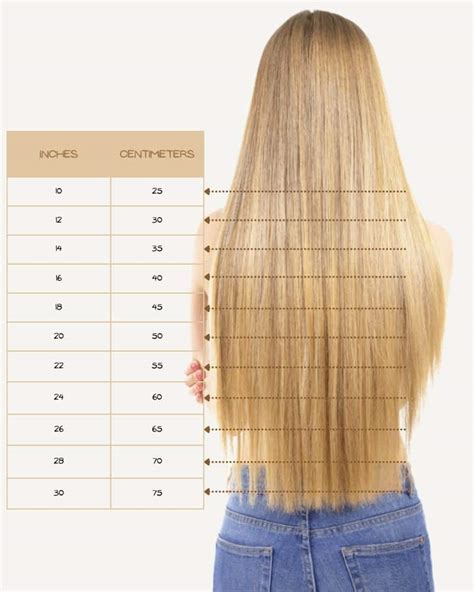Understanding hair length is crucial for maintaining healthy locks and achieving desired hairstyles. This comprehensive hair inch chart empowers you to measure your hair accurately, monitor its growth, and make informed haircare decisions.

Measuring Hair Length: A Step-by-Step Guide
- Wet Your Hair: Damp hair is more manageable and less likely to break during measurement.
- Comb and Section: Divide your hair into manageable sections to simplify the process.
- Use a Ruler or Measuring Tape: Place the starting point of the ruler at the base of your scalp and extend it to the desired endpoint.
- Read the Measurement: Note down the length in inches or centimeters.
Hair Inch Chart: A Comprehensive Guide
| Hair Length (Inches) | Hair Type | Description |
|---|---|---|
| 1-2 | Very Short | Pixie cut, buzz cut |
| 2-4 | Short | Bob, graduated bob |
| 4-6 | Medium | Shoulder-length, lob |
| 6-8 | Long | Long bob, below-the-shoulders |
| 8-10 | Extra Long | Mid-back length, waist-length |
| 10+ | Extreme Long | Floor-length, thigh-length |
Hair Growth Rate: What to Expect
According to the American Academy of Dermatology, the average hair growth rate is approximately 0.5 to 1.5 inches per month. However, individual hair growth rates can vary based on factors such as genetics, age, and health.
The Formula for Healthy Hair Growth
Balanced Diet: Consume a nutrient-rich diet that includes protein, biotin, iron, and vitamins A, C, and D.
Proper Scalp Care: Massage your scalp regularly to improve blood flow and exfoliate dead skin cells. Use a gentle shampoo and conditioner formulated for your hair type.
Avoid Chemical Treatments: Limit the use of heat styling tools and chemical treatments such as bleaching or dyeing, which can damage hair and hinder growth.
Strategies for Promoting Hair Growth
Scalp Serums: Apply specialized scalp serums that contain ingredients like minoxidil or rosemary oil to stimulate hair follicles.
Supplements: Consult with a healthcare professional about hair growth supplements that may contain biotin, iron, or collagen.
Low-Level Laser Therapy: This non-invasive treatment uses low-level lasers to promote hair growth and reduce hair loss.
Platelet-Rich Plasma (PRP) Therapy: This innovative technique involves injecting platelet-rich plasma into the scalp to facilitate hair regrowth.
Tips and Tricks for Measuring Hair Inch Chart
Use a Measuring Tape: A flexible measuring tape is more accurate than a ruler for measuring longer hair.
Measure from Multiple Locations: Take measurements from different points on your scalp to ensure accuracy.
Compare to a Reference: Use a photo or previous hair inch chart measurement as a reference point to track your hair growth.
Frequently Asked Questions
How often should I measure my hair?
Every 2-3 months for consistent tracking.
Is there a difference between hair length and hair volume?
Yes, hair length refers to the distance from the scalp to the hair tip, while hair volume refers to the thickness and fullness of the hair.
What is the “golden ratio” for hair length?
A hair length that falls an inch below the chin or approximately 6-8 inches is considered the most flattering for most face shapes.
How can I prevent hair breakage during measurement?
Use a wide-toothed comb or brush to detangle hair and minimize friction.
